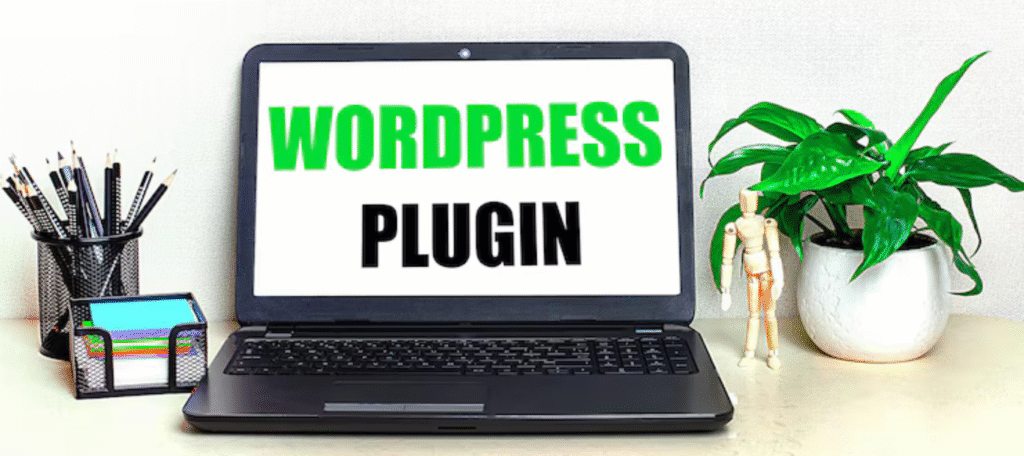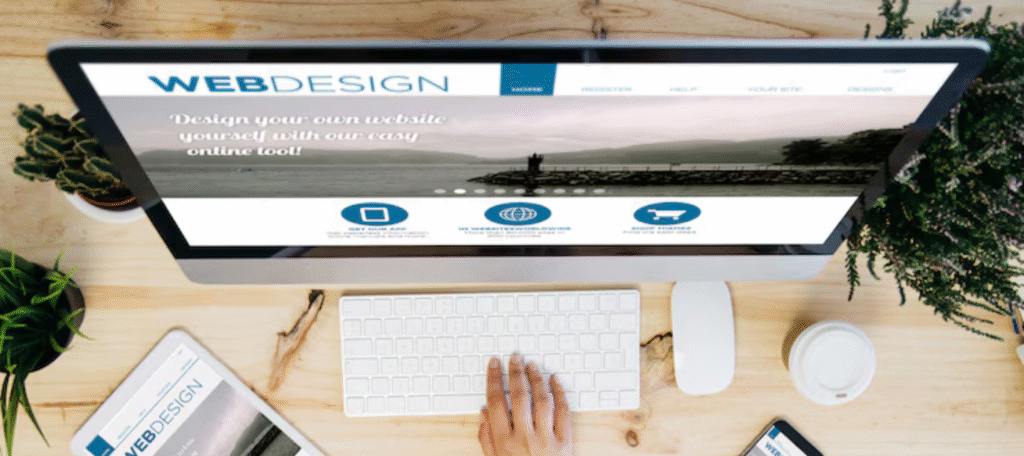In today’s fast-moving digital landscape, your website plays a crucial role in shaping how your brand is perceived. Whether you’re a startup founder, freelancer, service provider, or growing business, having a professional and functional website is no longer optional—it’s essential. That’s where WordPress website design comes into play.
WordPress is the world’s most popular content management system (CMS), powering over 40% of all websites on the internet. And for good reason. It’s flexible, user-friendly, and scalable and supports nearly any type of website—from blogs and portfolioso e-commerce stores and enterprise platforms.
In this article, we’ll dive into what WordPress website design involves, why it’s such a powerful choice for businesses and individuals, and how you can make the most of it for your brand.
What is WordPress website design?
WordPress website design refers to the process of planning, designing, and building a website using the WordPress platform. Unlike website builders like Wix or Squarespace, WordPress is an open-source CMS. This means developers and designers have the freedom to customize every aspect of your website, making it as simple or complex as needed.
It starts with a vision. You decide what your website should do, whether that’s generating leads, selling products, showcasing your portfolio, or sharing content. From there, designers create custom layouts, style elements, and user experiences tailored specifically to your brand.
While you can use pre-designed themes to build a WordPress site quickly, custom WordPress design goes a step further. It ensures your website looks unique, functions smoothly, and performs optimally on all devices.
Why WordPress is the Ideal Platform for Your Website
- Flexibility and Scalability One of the biggest advantages of WordPress is its flexibility. Whether you’re building a one-page website or a multi-language online store with thousands of products, WordPress can scale with you. It supports blogs, portfolios, business websites, e-commerce platforms (with WooCommerce), membership sites, booking systems, and more. As your business grows, your WordPress site can evolve. You’re never locked into a specific structure or layout.
- User-Friendly Interface WordPress is known for its intuitive admin dashboard. Even non-technical users can easily add blog posts, edit pages, update images, or manage users. This ease of use saves time and resources, especially for small businesses or solo entrepreneurs who want to maintain control over their content.
- Customization Options There are thousands of themes and over 50,000 plugins available for WordPress, but the true power lies in customization. With the help of a WordPress developer or designer, you can build anything from scratch—custom layouts, interactive features, branded designs, and integrations with external tools like CRMs, email platforms, and payment gateways.
- SEO-Friendly Foundation WordPress is naturally SEO-friendly. It uses clean code, allows for proper use of header tags, and supports SEO plugins like Rank Math and Yoast that help optimize meta titles, descriptions, schema markup, and more. With the right strategy, a WordPress site can rank higher in search engines and drive organic traffic consistently.
- Mobile Responsiveness A mobile-responsive website is no longer optional. Thankfully, most modern WordPress themes and custom designs are mobile-first or responsive by default. This means your content looks great and functions properly across smartphones, tablets, and desktops.
- Strong Community and Support Being open-source and widely used, WordPress has a massive global community. If you ever run into an issue, you can find tutorials, support forums, documentation, or professionals to help. This ensures your site is never left behind and can adapt to new technologies.

Elements of Effective WordPress Website Design
Designing a great WordPress site isn’t just about choosing a good theme. It involves thoughtful planning, UX design, and performance optimization. Here are some key elements to focus on:
- Clear and Engaging Layout: The layout of your website should guide visitors naturally toward taking desired actions—whether that’s contacting you, purchasing a product, or signing up for a newsletter. Use plenty of white space, clear headings, and strong visual hierarchy to keep things clean and digestible.
- Fast Loading Speed: Slow websites kill conversions and damage SEO. When designing your WordPress site, ensure images are optimized, unnecessary plugins are avoided, and caching systems are in place. Speed-boosting techniques like lazy loading, minifying scripts, and choosing a reliable hosting provider are also critical.
- Consistent Branding: Your WordPress website should be a true reflection of your brand. Custom colors, fonts, icons, logo placement, and tone of voice all help create brand consistency. A cohesive visual identity helps build trust and recognition with your audience.
- Easy Navigation: The menu structure should be simple and intuitive. Visitors should be able to find what they’re looking for within a few clicks. Avoid cluttering the menu with too many links, and use categories or dropdowns if necessary.
- Calls to Action (CTAs): Strategic placement of CTAs like “Get a Quote,” “Book a Call,” or “Subscribe Now” is vital for converting traffic. Your design should highlight these CTAs with strong visuals, contrasting colors, and clear text.
Custom vs. Theme-Based WordPress Design
While theme-based designs are quicker and more affordable, they often come with limitations in layout, functionality, and performance. Many businesses outgrow template-based designs as they require more customization, features, or branding control.
Custom WordPress design gives you full control. You can tailor the entire user journey, design unique page templates, build custom forms, and ensure your site works perfectly across devices and browsers.
A custom WordPress site also eliminates unnecessary features that come pre-packaged with themes, resulting in cleaner code and faster performance.

How WordPress Supports eCommerce
If you’re planning to sell products or services online, WordPress can easily transform into a powerful eCommerce platform using plugins like WooCommerce. This lets you add product pages, shopping carts, secure checkout, payment gateways, shipping options, coupons, and more.
Custom eCommerce design with WordPress ensures your online store not only looks professional but also offers a seamless shopping experience for your customers, leading to higher sales and retention.
Security and Maintenance
Security is crucial for any website, and WordPress offers a range of tools to protect your data and customers. Regular updates, strong passwords, SSL encryption, firewalls, and security plugins like Wordfence can prevent most common threats.
It’s also important to have a maintenance plan that includes regular backups, performance monitoring, and security checks. A well-maintained WordPress site will be fast, secure, and reliable.
Final Thoughts
WordPress website design is one of the smartest investments you can make for your online presence. Whether you’re launching a new business, redesigning an outdated site, or building a platform to scale, WordPress offers the flexibility, performance, and power you need to succeed.
A professionally designed WordPress site does more than look good—it functions smoothly, ranks well on search engines, provides a great user experience, and supports your long-term growth.
If you’re ready to elevate your brand online, now is the perfect time to invest in WordPress website design tailored to your specific goals. With the right team and a clear vision, your website can become your strongest digital asset.

